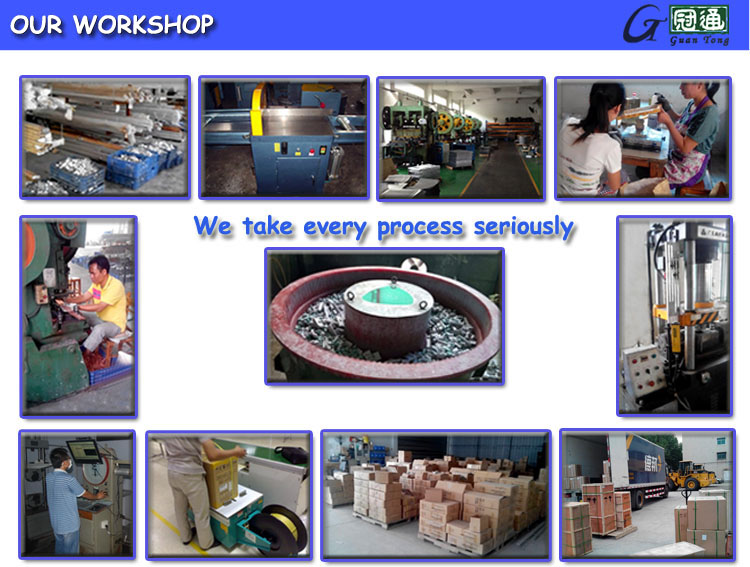News
6 common mistakes to avoid in telecom technology grounding- Guan Tong Electric
To minimize costly downtime, keep clear of these common errors that can undermine investment in surge-protection technology.
By Mo Masghati, ITW Linx
All companies know that downtime is expensive. Downtime caused by inadequately performing protection can lead to costly damage or destruction of pricey technology, and hurt a company's reputation among inconvenienced customers. Yet many companies routinely overlook the most frequent mistakes made in ensuring proper surge protection.
In order to avoid downtime, networked buildings and the equipment they house need to be protected from the dangers of lightning and power cross surges, the most common causes of surge damage. Lightning strikes even a few miles from a building can generate a surge that travels through aerial or buried cable to sensitive electronic equipment in networked buildings, including campuses (educational facilities, hospitals, office parks), data transaction centers (retail stores, banks, commercial buildings) and parks and recreational facilities (amusement parks, movie theaters, restaurants).
To ensure that downtime does not occur, it is important for companies to protect valuable and sensitive telecommunications equipment by investing in quality surge-protection technology to ensure that external surges cannot damage their equipment. The importance of proper grounding is essential in eliminating downtime, but is often overlooked. True surge protection begins from the ground up. Not even top-of-the-line surge protectors can protect valuable and sensitive telecom equipment if the protector is not properly grounded.
The following six grounding mistakes are responsible for a vast majority of surge-protection failures.
Grounding mistake 1: Not understanding impedance guidelines
Ground resistance determines how much and how fast a surge can be diverted to the ground instead of reaching and damaging equipment. The effectiveness of all overvoltage protectors relies on a path of least resistance for "dumping" transient voltages. The higher the resistance to the ground, the higher the true activation level is for a protector (the lower the activation level, the better).
When technicians install a surge protector, they are obligated to follow National Electrical Code regulations, which require impedance be no more than 8 to 15 ohms. What most people do not realize is that the NEC regulations were developed in order to protect people and buildings. These regulations do not take into consideration the protection of sensitive digital telecom equipment used to send and receive data or voice, such as computers, phones, Ethernet Voice over IP, T1/E1, ISDL and DSL. According to Federal Communications Commission guidelines, which address the sensitivity of telecom equipment, impedance must be less than 1 ohm and ideally less than 0.5 ohms. This is a considerable difference that can have a significant impact on the effectiveness of a surge protector.
To ensure proper protection of increasingly complex and sensitive telecom technologies, installers should be sure there is common grounding and ground potential of less than 1 ohm--ideally less than 0.5 ohms.
Grounding mistake 2: Wrapping ground wire
Widely accepted FCC and NEC guidelines state that the grounding wire between the busbar and the grounding rod should not exceed 50 feet in length. Unfortunately, many installers bring cabling in 50-foot segments to all installations when in fact the required distance at a given installation point can be shorter. When this occurs, they often coil the additional wire. Coiling the wire
significantly increases resistance and can lead to malfunctioning surge protection. In fact, if a 14-gauge wire between 10 and 30 feet in length is coiled with a 5- to 10-inch radius, it typically creates 4 to 12 ohms resistance during lightning. This coiled cable increases the ground resistance by up to 12 times, profoundly impacting the effectiveness of surge-protection technology.
As a rule of thumb, not only should cable never be coiled; it should always be installed in as straight a manner as possible. Any minor bends or loops can add dangerous resistance.
Grounding mistake 3: Size of wire
The thicker the wire gauge, the lower its resistance, which is good as lower resistance allows for unhindered transmission of the surge to the ground. The key element in selecting which gauge of wire to use for surge-protection grounding is to think about your needs today and in the future. Always follow your local, UL and FCC codes when selecting ground wire gauge.
Laying new wire can be a timely and expensive undertaking. It is much easier and often more cost-effective to select a wire gauge that will not only meet your needs today, but down the road when new and more advanced technologies will likely need to be added to your grounding platform.
In homes, 10- to 14-gauge wire can often be used because the distance to the grounding pole is short. In commercial/retail/public buildings the distance is much larger and lower gauge (thicker) wire is needed to ensure effective resistance. For networked, non-residential buildings, six-gauge ground wire is recommended. Six-gauge wire can protect up to 25 pairs of different devices and protectors. Installing six-gauge wire will help ensure that your technology is well grounded today and in the years ahead as well.
Grounding mistake 4: Wire connections
The wire used to connect the electric copper ground rod to the telecommunications room common busbar needs to be securely tied down with a spade or ring lug. If the joints in the grounding setup are not fastened tightly enough, extra resistance, known as contact resistance, is generated; it can reduce the effectiveness of surge-protection equipment.
For example, an improperly ground bonding can lead to more than 100 percent of additional resistance--enough to dramatically hinder the performance of surge-protection technology.
Grounding mistake 5: Technology selection
All four of the common mistakes already mentioned come into play at the point of installation. Though surge protectors may be well designed, they are at risk if not properly grounded and installed. In order to minimize installation errors, it is crucial to identify a technology that minimizes the chances for installation errors to occur. It is important that your surge connector comes with all of the hardware necessary for proper grounding so that precisely the correct parts are used by the installer.
Also, look for technologies that minimize the need to do additional grounding when new technologies are added. One type of surge protector in particular has a common grounding feature. One side includes a ground tab to which installers can connect the main ground wire. The other side is equipped with a ground tab and screw that allows installers to connect additional protectors to the original surge protector without the need for separate ground wire.
Grounding mistake 6: Lack of single grounding point
Protector ground and all other equipment grounds that are being protected must be connected to a "single common ground point." A single ground point balances the ground resistance. If more than one single common ground point is used, surge and lightning can travel from one ground point through the equipment to the other ground point. This process is called "ground loop" and can damage the equipment.
Every year, all types of companies spend limited resources on surge-protection technology. It is a critical investment to protect against costly downtime and damage to sensitive and expensive technology. However, it is important to note that all surge-protection technology can only be effective if properly installed and grounded. Making sure to avoid the six most common grounding mistakes can minimize downtime and help ensure that customers are truly getting what they pay for when they invest in surge-protection technology. ::
COMPANY SHOW:
Guan Tong is a key player in electric and telecom industry. We manufacture and OEM transmission, distribution and telecommunication hardware and fittings.The innovative spirit in our enterprise makes us not only the best one, but the first one in the section.









 Claire
Claire  Sales
Sales  Enquiry
Enquiry